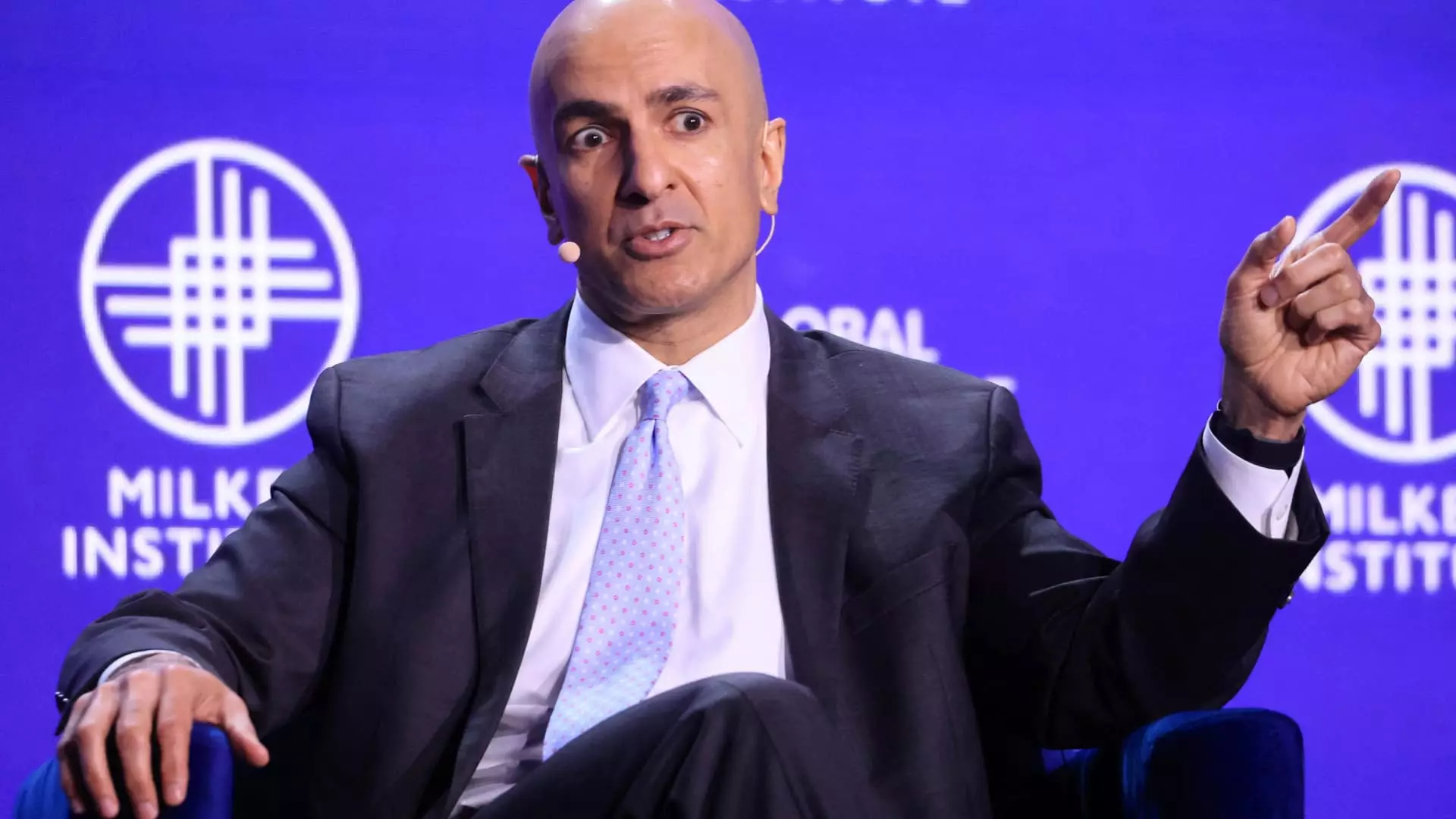The landscape of U.S. monetary policy is delicately shifting, as indicated by recent remarks from key figures at the Federal Reserve. Minneapolis Federal Reserve President Neel Kashkari, in a notable interview with CNBC, articulated expectations for a reduction in the pace of interest rate cuts following the committee’s recent decision to lower rates by half a percentage point. This pivotal moment in interest rate policy raises important questions about the future trajectory of monetary policy and its implications for both consumers and businesses.
The Federal Open Market Committee (FOMC) surprised many observers when it voted to decrease its benchmark overnight borrowing rate by 50 basis points, marking the largest cut since the onset of the COVID-19 pandemic. Historical context reveals that such a significant reduction had not occurred since the financial crisis of 2008. Kashkari explained that while this hefty cut may appear dramatic, it was essential to recalibrate the focus from combating inflation to addressing the signs of a softening labor market. The pressing need for such action demonstrates the Fed’s evolving priorities in response to economic indicators.
Kashkari’s comments suggest a return to traditional monetary policy could be on the horizon. He emphasized that the central bank’s easing measures may now transition to smaller increments unless substantial data suggests an alternative course of action. He noted that despite signs of a robust labor market, vigilance remains crucial in maintaining economic stability. The reference to achieving the Fed’s inflation target of 2% showcases a commitment to long-term economic health rather than immediate reactive measures.
This balancing act illustrates the complexities the Federal Reserve faces as it seeks to navigate the economy’s intricate dynamics while avoiding the traps of either excessive inflation or stifled growth. It raises the question of whether a cautious approach will be sufficient to instill confidence in both consumers and investors going forward.
Many are turning their attention to recent economic data, which appears to depict a slowing inflation rate and a cooling labor market, thus prompting speculation about the Fed’s next steps. Federal Reserve President Raphael Bostic echoed Kashkari’s sentiments, expressing optimism regarding the return to neutral interest rates sooner than anticipated. His perspective that inflation and labor market conditions have progressed more rapidly than expected indicates a possible alignment within the FOMC on the current strategy.
The implication of the FOMC’s shifting strategy is profound; it may indicate a more aggressive approach as policymakers align rate cuts with broader economic conditions. The indication that the Fed stands ready to adapt its policies depending on labor market strength or inflation trends underscores the importance of remaining agile in today’s economic environment.
Markets appear to be bracing for continued adjustments to interest rates, with expectations of possible further cuts at upcoming meetings, particularly in November and December. Market pricing suggests an even chance of either a quarter- or half-percentage-point cut, signaling that traders are attuned to the Federal Reserve’s stance while remaining wary of heightened inflation risks that could lead to tighter monetary policy once again.
This fluid situation compels stakeholders, from everyday consumers to large financial institutions, to stay informed and responsive to potential shifts in monetary policy. The balance the Fed is attempting to strike presents both opportunities and challenges in a landscape marked by ongoing uncertainty.
As the Federal Reserve navigates this treacherous economic terrain, the insights provided by Kashkari and Bostic caution against complacency. Expecting rates to normalize suggests a commitment to achieving stable economic growth without overheating or excessive regulation. However, as evidence continues to unfold, the Fed’s ability to adapt its strategy rapidly will be key in ensuring that both inflation and labor market conditions maintain a healthy equilibrium. This ongoing dance between growth and regulation will ultimately define the trajectory of the American economy in the months and years to come.

